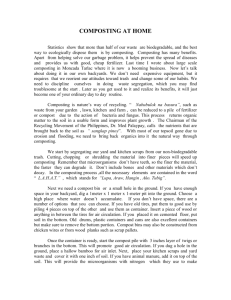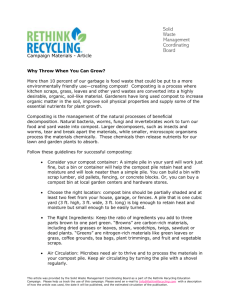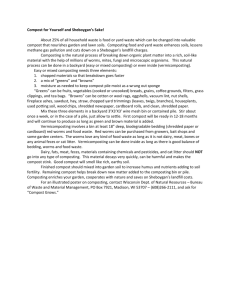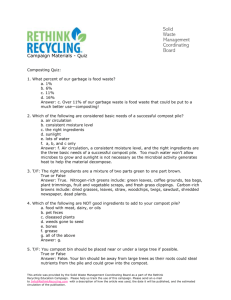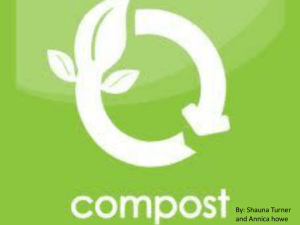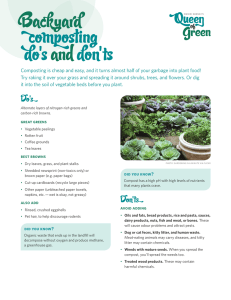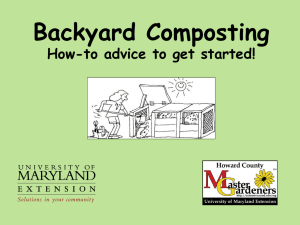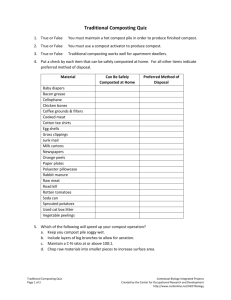The Sweet Smell of Composting
advertisement
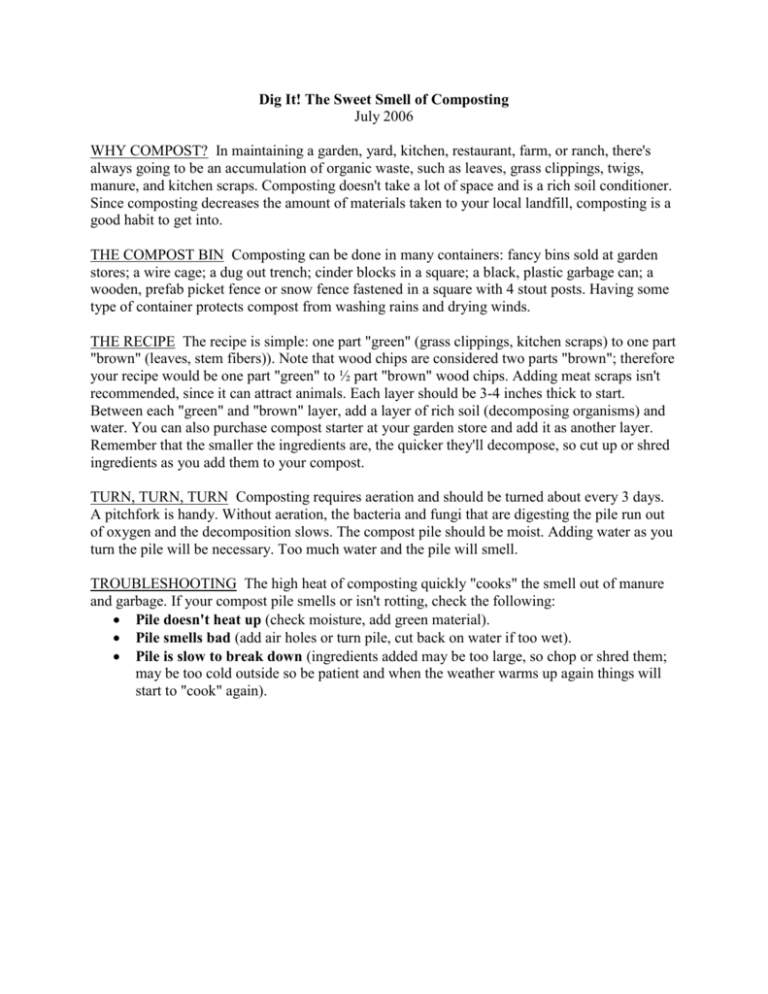
Dig It! The Sweet Smell of Composting July 2006 WHY COMPOST? In maintaining a garden, yard, kitchen, restaurant, farm, or ranch, there's always going to be an accumulation of organic waste, such as leaves, grass clippings, twigs, manure, and kitchen scraps. Composting doesn't take a lot of space and is a rich soil conditioner. Since composting decreases the amount of materials taken to your local landfill, composting is a good habit to get into. THE COMPOST BIN Composting can be done in many containers: fancy bins sold at garden stores; a wire cage; a dug out trench; cinder blocks in a square; a black, plastic garbage can; a wooden, prefab picket fence or snow fence fastened in a square with 4 stout posts. Having some type of container protects compost from washing rains and drying winds. THE RECIPE The recipe is simple: one part "green" (grass clippings, kitchen scraps) to one part "brown" (leaves, stem fibers)). Note that wood chips are considered two parts "brown"; therefore your recipe would be one part "green" to ½ part "brown" wood chips. Adding meat scraps isn't recommended, since it can attract animals. Each layer should be 3-4 inches thick to start. Between each "green" and "brown" layer, add a layer of rich soil (decomposing organisms) and water. You can also purchase compost starter at your garden store and add it as another layer. Remember that the smaller the ingredients are, the quicker they'll decompose, so cut up or shred ingredients as you add them to your compost. TURN, TURN, TURN Composting requires aeration and should be turned about every 3 days. A pitchfork is handy. Without aeration, the bacteria and fungi that are digesting the pile run out of oxygen and the decomposition slows. The compost pile should be moist. Adding water as you turn the pile will be necessary. Too much water and the pile will smell. TROUBLESHOOTING The high heat of composting quickly "cooks" the smell out of manure and garbage. If your compost pile smells or isn't rotting, check the following: Pile doesn't heat up (check moisture, add green material). Pile smells bad (add air holes or turn pile, cut back on water if too wet). Pile is slow to break down (ingredients added may be too large, so chop or shred them; may be too cold outside so be patient and when the weather warms up again things will start to "cook" again).
